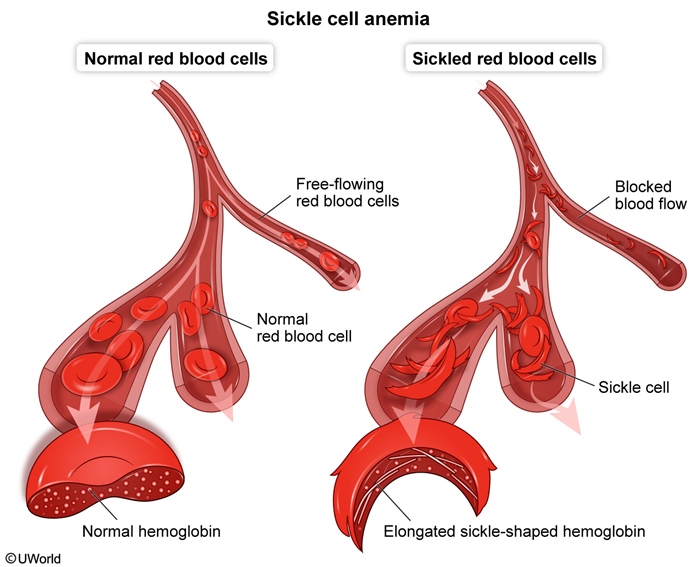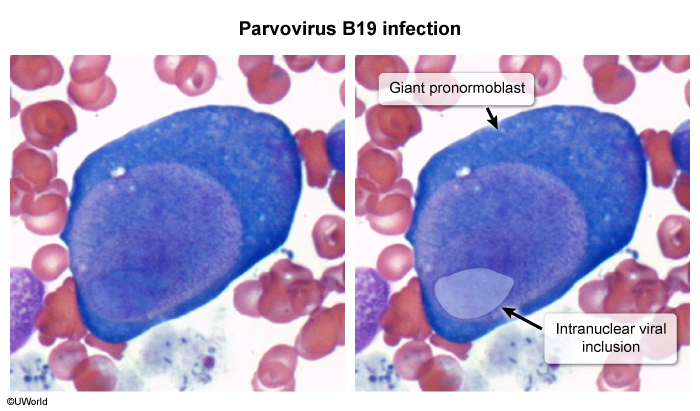Sickle Cell Disease Complications
Article Sections
Introduction
Sickle cell disease (SCD) (Table 1) involves a group of inherited hemoglobinopathies characterized by the predominance of hemoglobin S (Hb S), a structural variant of hemoglobin, within red blood cells (RBCs). Unlike normal hemoglobin, Hb S polymerizes under hypoxic conditions, forming rigid, sickle-shaped RBCs. Patients have lifelong chronic hemolysis and vasoocclusion (Figure 1) that can cause both acute (eg, ischemic pain) and chronic complications (eg, chronic kidney disease). This article focuses on specific complications of SCD and their management.
Infection
- Chronic vasoocclusion causes splenic infarctions that result in functional hyposplenism. Loss of splenic function significantly increases the risk for serious bacterial infection. Normally, circulating opsonized bacteria are recognized by splenic macrophages and are destroyed. This process is particularly important for protection against encapsulated bacteria
Continue Learning with UWorld
Get the full Sickle Cell Disease Complications article plus rich visuals, real-world cases, and in-depth insights from medical experts, all available through the UWorld Medical Library.
Figures

Images
